With their new book Sauerbruch Hutton: Colour in Architecture, Berlin-based Matthias Sauerbruch and Louisa Hutton make clear their penchant for polychromy. Narelle Yabuka has this story.
April 4th, 2012
“Polychromatic architecture has been so out of practice,” says Matthias Sauerbruch, “that using as much colour as we do is considered a distinguishing feature.”
Embracing their notoriety, Sauerbruch Hutton has recently released a monograph with which they hope to invigorate the conversation about colour on and in buildings.

Sauerbruch Hutton’s monograph. Photo: noshe
It’s a conversation that languished, says Louisa Hutton, under the widely adopted dogma of the modernist white cube – a concept that was, in fact, somewhat flawed having been partially manufactured within architectural journals.

Cologne Oval Offices. Photo: Jan Bitter
Challenging the dogma that lives on, the book Sauerbruch Hutton: Colour in Architecture (published by Distanz Verlag, 2012) is a showcase for 9 of the firm’s colour-rich projects. It is, however, much more than this.
Through project descriptions and other texts, the book gently introduces the reader to the complexities inherent in Sauerbruch Hutton’s practice of designing with and thinking about colour – materialising colour; using colour to manipulate impressions of space and form; perceiving colour in the built environment; and connecting colour with place.

Photonics Centre. Photo: bitterbredt.de
While it provides a window to the aesthetic experience of the firm’s work, the book also makes one aware of the bodily experience of the buildings – their sensual impact – as well as the sustainable ethos with which they are crafted.

M9 Museum. Image: Sauerbruch Hutton

Low2No mixed-use housing. Image: Sauerbruch Hutton
The sensory and sustainable factors are often intertwined. “There are many layers to the reason why one does sustainable architecture,” says Hutton, suggesting that the impetus should come from architects as well as clients. “I hope that a sense of corporate social responsibility (and employee relations) as well as legislation can encourage clients to think about how natural they would like the environments inside their buildings to be,” she says.

Federal Environment Agency. Photo: bitterbredt.de/Sauerbruch Hutton

Federal Environment Agency. Photo: Annette Kisling/Sauerbruch Hutton
Adjustable panes of coloured enamel-coated glass have played significant roles in the breathing skins of many of Sauerbruch Hutton’s buildings. Recently, polychromy has been investigated via glazed ceramic – a material the architects describe as “stable and self-cleaning” as well as capable of offering very subtle tones.
“It’s difficult to talk about colours,” says Sauerbruch. “Just agreeing on one word to describe a single colour is hard.” Talking about colour in architecture understandably involves a degree of increased complexity. The book keeps the conversation at a level that will be understood by many, while communicating the highly considered voices of its authors and the sense of responsibility with which they carry out their work.

Brandhorst Museum. Photo: Annette Kisling/Sauerbruch Hutton
“The need for a sustainable attitude towards urbanism and architecture gives architects, clients, and cities a chance to see that one should work with a sense of local identity and try to make buildings that are particular for their sites,” says Hutton.
She adds, “Coupled with globalisation is the increasing privatisation of people with their portable devices. I think it’s very important therefore to create places that are individual and that appeal directly to the senses.”

GSW Headquarters. Photo: Annette Kisling/Sauerbruch Hutton
Top image: Matthias Sauerbruch and Louisa Hutton. Photo: Charity Goh.
Sauerbruch Hutton
sauerbruchhutton.com
INDESIGN is on instagram
Follow @indesignlive
A searchable and comprehensive guide for specifying leading products and their suppliers
Keep up to date with the latest and greatest from our industry BFF's!

For Aidan Mawhinney, the secret ingredient to Living Edge’s success “comes down to people, product and place.” As the brand celebrates a significant 25-year milestone, it’s that commitment to authentic, sustainable design – and the people behind it all – that continues to anchor its legacy.
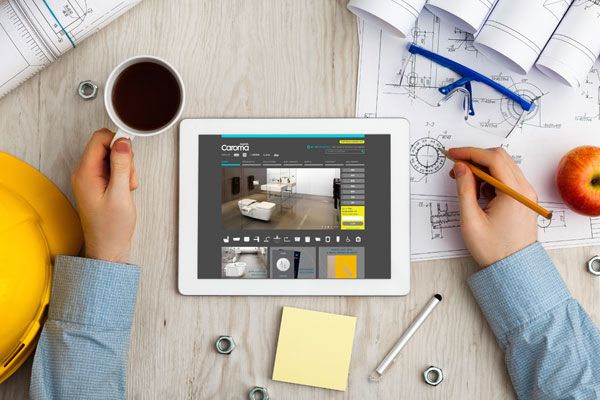
Australian bathroomware brand Caroma has launched a new unique space for industry professionals. Specify.caroma.com.au is now Caroma’s one stop destination for all specification needs.

The Danger Of Kitsch In The Workplace: How to experiment without making our industry look naff.
The internet never sleeps! Here's the stuff you might have missed
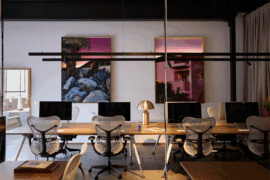
With a minimalist aesthetic and an inventive approach to product, ZETR is challenging the way electrical accessories are designed, made and experienced.
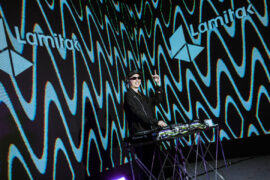
Lamitak’s Portfolio 2026/27 Collection made its debut in Bangkok with colour, energy and a crowd that celebrated design in full swing.
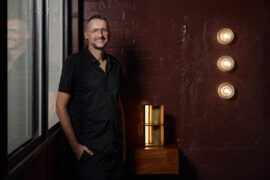
Celebrating ten years of creative impact, Melbourne Design Week 2026 invites designers, studios, and collectives to submit expressions of interest for its statewide program and the Melbourne Art Book Fair.
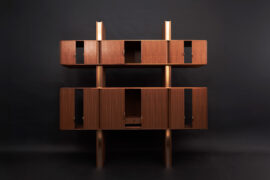
Adam Markowitz Design, in collaboration with Simeon Dux, has been awarded The Object at the INDE.Awards 2025. Their winning project, A Cabinet of Curiosities, is a masterwork of craftsmanship and adaptability; a poetic response to shifting domestic and professional life in the post-COVID era.